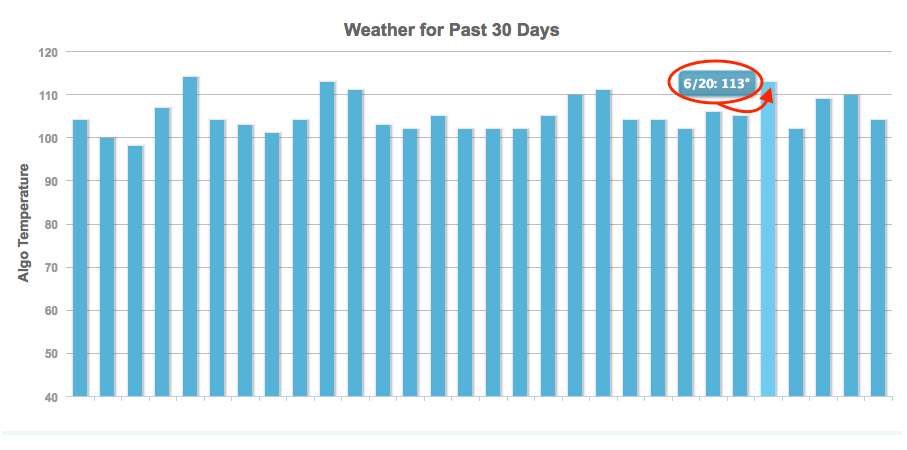What You Missed Last Month in Google. June News About Google Algorithm Updates There’s a funny thing about Google’s algorithm updates: “They’re often very minor tweaks,” says Matt Barby, HubSpot’s global head of growth and SEO. “Major updates,” he continues, “are rare, but have the most meaningful impact on marketers.” In May, rumors emerged that Google was working to add more features along the lines of featured snippets, like including job listings directly on the search results page. It was largely the result of Google’s partnership with the Coalition for Better Ads, which recently developed Better Ads Standards -- and it appears that those standards serve as the foundation for Google’s new ad recommendations to content creators. The announcement came on June 23, when it was revealed that users of Google’s free email service would now be able to disable ads personalization in their settings, which means that their emails will no longer be scanned for data to tailor ads displayed for the user. However, a search for “jazz concerts in Boston” did: 2) Mobile image search filters Gone are the days of conducting a Google image search and having to scroll all the way over to “search tools” to narrow your results -- on mobile, at least. Second, not only does the search yield images of exactly what I was hoping to find -- turquoise home decor -- but it also displayed shopping results: an ad feature Google rolled out in May 2016. A user enters data on an HTTP page. Google rolled out some pretty detailed hotel search filters and criteria options in July 2016, and now, it seems to be testing some new ways for users to filter reviews. And given the earlier news about Google’s job listings within direct search results, we can’t help but wonder what, exactly, the search giant is up to in the realm of recruiting.

For many things in life, it seems like there’s a weather analogy. A happy disposition is often described as “sunny.” Something foreboding could be said to “cast a cloud” on someone. And, according to MozCast, indications of a big change in Google’s algorithm can be described as “hot and stormy.”
That’s not bad news for marketers. Tools like MozCast can help you do your job better and help you decipher why you might see a sudden change in your search rankings or other SEO-related shifts. The tricky part, it seems, is keeping up with all things Google: the algorithm, the new features, and what people are searching for the most.
That’s why we’ve put together this list of the major highlights in each of those categories for the month of June. Read on for the full recap below.
June News About Google
Algorithm Updates
There’s a funny thing about Google’s algorithm updates: “They’re often very minor tweaks,” says Matt Barby, HubSpot’s global head of growth and SEO.
“Major updates,” he continues, “are rare, but have the most meaningful impact on marketers.”
In May, rumors emerged that Google was working to add more features along the lines of featured snippets, like including job listings directly on the search results page. Word of that feature came to fruition when Moz Associate Dan Shure tweeted images of his reported results in late April:
WOW look out job listing sites, Google appears to be positioning to eat up that real estate also (cc @dr_pete) pic.twitter.com/g56KxnJCA7
— Dan Shure (@dan_shure) April 28, 2017
… and later went on to make this video about what he found:
Those rumors were confirmed at Google I/O 2017, and on June 20, Google for Jobs officially launched. As per the image below, it correlated with a spike in the MozCast temperature on the same day:

“Starting today in English on desktop and mobile, when you search for ‘jobs near me,’ ‘teaching jobs,’ or similar job-seeking queries, you’ll see in-depth results that allow you to explore jobs from across the web,” wrote Google Product Manager Nick Zakrasek in the official announcement. “For many jobs, you’ll also see reviews and ratings of the employer from trusted sites, right alongside the job description, and if you’re signed in, for some jobs you’ll even see how long it would take to commute to the job from home.”
Zakrasek goes on to describe the feature as a work-in-progress, adding that more filters and details will be added to listings as Google continues to tinker with the algorithm to produce better job results.
This isn’t Google’s first foray into the world of hiring — Google Hire, the company’s new platform for helping employers manage recruiting processes, was unveiled last spring.
New Ad-Blocking Measures
On June 1, Google announced it would further crack down on websites that feature intrusive ads like these. And while that might sound great for many, some content creators who rely on ad revenue were concerned.
But as it turned out, Google’s intent wasn’t to do away with ads completely — rather, it appeared to be for webmasters to move away from digital ads that interrupt a user’s content consumption, without losing critical ad revenue in the process. It was largely the result of Google’s partnership with the Coalition for Better Ads, which recently developed Better Ads Standards — and it appears that those standards serve as the foundation for Google’s new ad recommendations to content creators. Once publishers modify their ads to meet the new standards, they can then use Google’s Ad Experience Report to test if they’re in violation of the new standards.
This announcement comes on the heels of May’s reveal of Unique Reach: “a new measurement tool that captures the number of times the same person has seen an ad,” according to TechCrunch, measuring “how many people are shown display and video ads and captures unique users in addition to average impressions per unique user.”
At this point, it’s not entirely clear what the penalty will be for those in violation. The official announcement makes no mention of search ranking implications, though given the search engine’s history within this realm, we wouldn’t be surprised if websites in violation perform as well in search results. In the meantime, we recommend checking out Google’s criteria for what constitutes a “bad ad” on its DoubleClick blog.
No More Inbox Scanning (for Ads)
According to Google, there are over three million organizations using G Suite, its collection of email, video communication, and cloud storage apps (among others). And while G Suite users have never been privy to email scanning for ad personalization, now, neither will free Gmail users anymore.
The announcement came on June 23, when it was revealed that users of Google’s free email service would now be able to disable ads personalization in their settings,…

COMMENTS